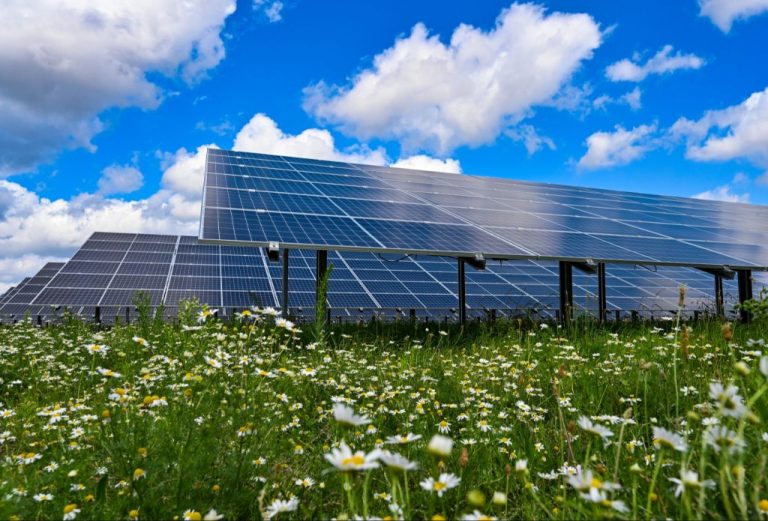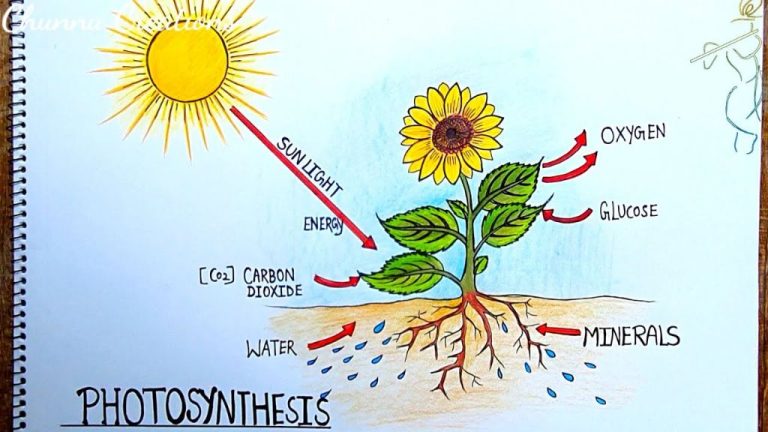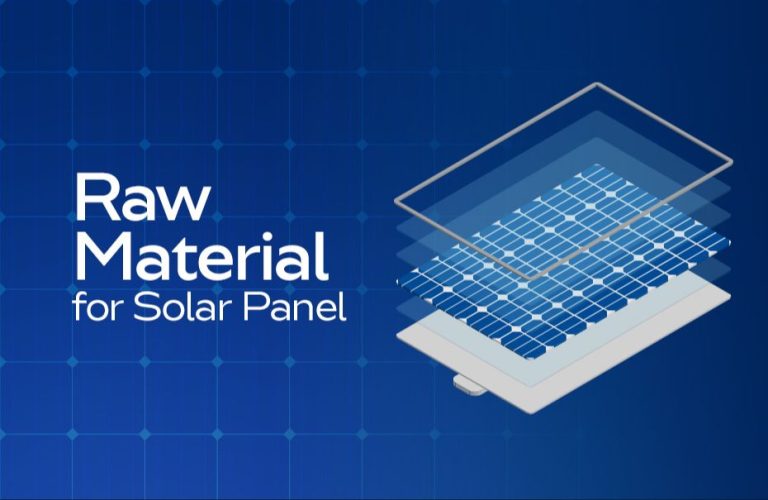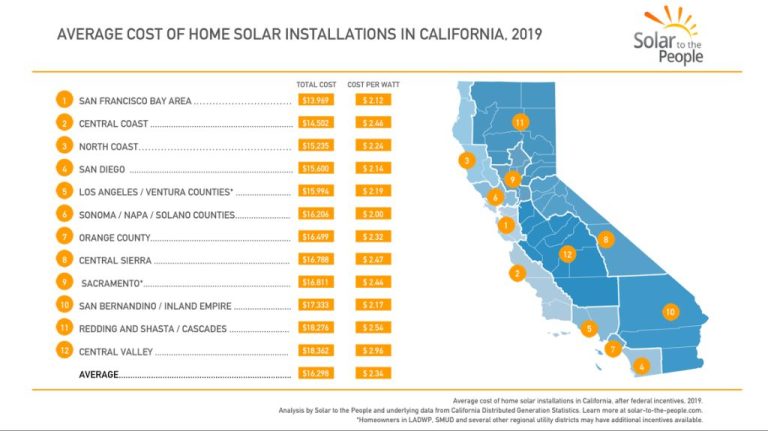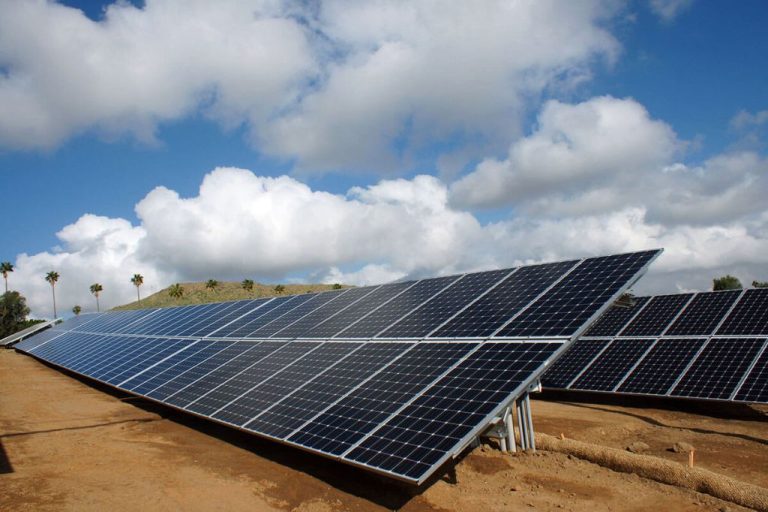What Does Pv Solar Stand For?
This article will provide an overview of PV solar, explaining what the acronym PV stands for, how PV solar cells work, the different types of PV solar cells, PV cell efficiency ratings, the main applications for PV solar power, the components that make up a complete PV solar system, the advantages and disadvantages of PV solar technology, and more. We’ll start with a quick introduction to PV solar power.
PV stands for “photovoltaic,” referring to a method of converting sunlight directly into electricity. PV solar cells are made from semiconducting materials that convert photons from sunlight into an electric current via the photovoltaic effect. Arrays of PV solar cells are connected together to form PV solar panels, which can be installed on rooftops, buildings, vehicles, and more to harvest renewable solar energy.
What Does PV Stand For?
PV stands for “photovoltaic.” The term photovoltaic refers to the process of converting light (photons) from the sun directly into electricity (voltage). PV gets its name from the process of converting photons from sunlight into electricity.
The word photovoltaic comes from “photo” meaning light, and “voltaic,” meaning electricity. So photovoltaic refers to the interactions between light and electricity. Specifically, the photovoltaic effect refers to photons from sunlight knocking electrons loose in a material to generate electric current.
In summary, PV is simply an abbreviation for “photovoltaic.” When we talk about PV solar, PV solar cells, or PV solar panels, we are referring to the technology that converts energy from sunlight directly into electrical energy.
How PV Solar Cells Work
PV solar cells, also known as photovoltaic cells, convert sunlight directly into electricity through the use of semiconductors. When sunlight hits the semiconductor material in a solar cell, the photons from the sunlight knock electrons loose from their atoms, allowing the electrons to flow through the material and produce an electric current. This process is called the photovoltaic effect.
The most common semiconductor material used in PV solar cells is crystalline silicon, similar to what is used in computer chips. When sunlight hits the silicon, electrons are knocked loose from the silicon atoms. The front and back of the solar cell contain metallic conductors that form a closed loop to allow the electrons to flow through the cell, generating electricity. The flow of electrons produces DC electric current that can then be converted into AC electricity for home and business use through an inverter.
PV solar cells essentially act like batteries, storing the energy from sunlight in the form of DC electricity. Multiple solar cells are connected together in modules or panels to increase the amount of electricity generated. The key advantage of PV solar cells is their ability to directly convert light into electricity without any moving parts or environmental emissions.
Types of PV Solar Cells
There are three main types of photovoltaic solar cells:
Monocrystalline Solar Cells
Monocrystalline solar cells are made from silicon ingots, which are cylindrical in shape. To fabricate the cell, the silicon is cut into thin wafers. Monocrystalline solar cells have the highest efficiency rates since they are made from the highest-grade silicon. However, they are more expensive than other types of solar cells.
Polycrystalline Solar Cells
Polycrystalline solar cells start as molten silicon, which is poured into a mold to form a block or square. The block is then cooled and cut into wafers. Polycrystalline cells are cheaper to produce than monocrystalline cells but are less efficient. The lower efficiency is due to impurities and irregularities in the silicon block.
Thin Film Solar Cells
Thin film solar cells are made by depositing one or more thin layers of photovoltaic material onto a substrate. Thin film cells use less photovoltaic material than crystalline silicon cells. They are easier to manufacture but tend to be less efficient than crystalline silicon. Common materials used in thin film cells include cadmium telluride and copper indium gallium selenide.
PV Solar Cell Efficiency
PV solar cell efficiency refers to the percentage of sunlight energy that the PV cell is able to convert into usable electricity. Not all sunlight that hits the solar cell can be converted into electricity due to reflection, absorption and conversion losses. The efficiency depends on the materials and technology used in the solar cell.
The most common and affordable PV solar cells are made from crystalline silicon and typically have efficiencies around 15-20%. More advanced designs like monocrystalline PERC cells can reach over 22% efficiency. Thin-film PV like cadmium telluride (CdTe) and copper indium gallium selenide (CIGS) tend to have slightly lower efficiencies of 10-15%. The highest efficiency PV cells use more exotic materials like gallium arsenide (GaAs) and can reach over 30% efficiency, but these are very expensive.
In real-world conditions, factors like shading, dust, heat, and solar spectrum also impact efficiency. So the module efficiency rating is done under Standard Test Conditions (STC) to enable fair comparison. The key point is that higher efficiency modules will produce more electricity for the same surface area, but they also cost more. So there are always tradeoffs between efficiency, cost and production volume that need to be evaluated for each application.
PV Solar Applications
PV solar has a wide range of applications including residential, commercial, and utility-scale systems. The scale and complexity of the system determines which applications it is best suited for.
Residential
Residential PV solar systems are installed on people’s homes, either on the roof or ground-mounted, to offset their electricity usage. Typical system sizes range from 3-10 kW. Excess solar electricity generated during the day can be exported back to the grid. Residential systems allow homeowners to reduce their electricity bills and their home’s carbon footprint.
Commercial
Commercial PV systems are installed on the rooftops or grounds of commercial buildings like offices, warehouses, schools etc. System sizes tend to be larger than residential, ranging from 10 kW up to the megawatt (MW) scale. Commercial systems offset daytime electricity consumption, reducing operating costs for the business.
Utility-Scale
Utility-scale PV systems are ground-mounted installations that feed directly into the electricity grid rather than supplying a building. System sizes start at around 1 MW, going up to hundreds of MW for large solar farms. Utility-scale systems provide renewable power at scale, helping utilities meet renewable energy targets and reduce reliance on fossil fuels.
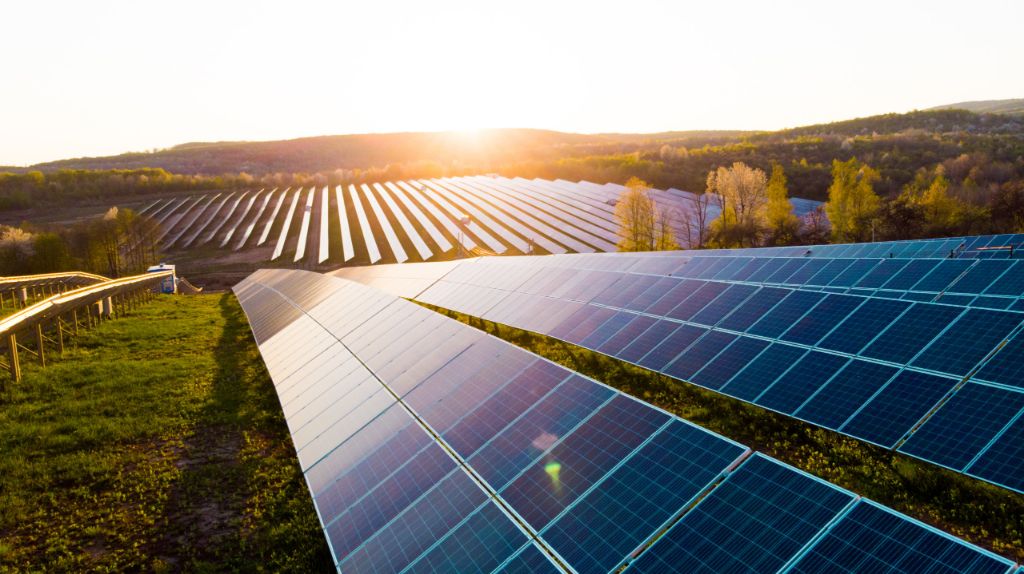
PV Solar System Components
A PV solar system consists of multiple key components that work together to generate electricity from sunlight. The main components of a PV solar system include:
Solar Panels
Solar panels, also known as PV modules, are used to convert sunlight into electricity. They are made up of many individual solar cells encased in a protective covering. Arrays of solar panels are mounted together on racks and tilted at an optimal angle to maximize solar energy production.
Inverter
An inverter is an electrical device that converts the direct current (DC) electricity generated by solar panels into alternating current (AC) electricity that can power lights, appliances, and other electronics in buildings. Inverters connect to batteries in off-grid systems to store solar energy.
Racking
Racking provides the mounting structure to securely attach solar panels in an array. Racking is made of durable materials like aluminum or steel that can withstand outdoor elements. It is designed to properly angle panels to face the sun and maximize solar capture throughout the day.
Advantages of PV Solar
PV solar power offers several key advantages that make it an attractive renewable energy option:
Renewable and Sustainable
Solar energy is a renewable resource, meaning it is naturally replenished and available indefinitely. Sunlight can be harnessed day after day, and will continue shining for billions of years. This makes PV solar a sustainable long-term energy solution, reducing reliance on finite fossil fuels.
Falling Costs
The cost of solar panels and installation has dropped dramatically in the past decade, making PV solar increasingly affordable. Government incentives can further reduce upfront costs. The fuel itself – sunlight – is free. This makes the lifetime costs of solar power competitive with conventional power.
Low Maintenance
PV solar systems require little maintenance over their lifespan of 20-25 years. With no moving parts and designed for outdoor exposure, solar panels are simple to look after. Maintenance is primarily inspecting, cleaning and repairing panels and inverters as needed.
Disadvantages of PV Solar
While PV solar power offers many benefits, it also has some drawbacks to consider:
High Upfront Costs
The main disadvantage of PV solar panels is their high initial installation cost. Complete PV solar systems with panels, mounts, inverters, and batteries can cost anywhere from $10,000 – $30,000 depending on system size. This is more than typical grid electricity over the same time period. However, solar PV system costs are dropping steadily, and financial incentives like tax credits can offset the upfront expense.
Intermittency
PV solar power output depends on the amount of sunlight, which varies throughout the day and year. Solar panels produce less energy on cloudy days, and none at night without an energy storage system. This intermittency means solar may need to be combined with the grid, generator, or batteries for 24/7 power.
Space Requirements
Solar panels require adequate roof or ground space for installation. While advances in solar cell efficiency allow more power output from smaller areas, quality solar access remains important. Urban areas or heavily shaded properties may lack sufficient unobstructed space.
Conclusion
PV solar stands for photovoltaic solar and refers to solar panels that convert sunlight directly into electricity. This technology allows households and businesses to harness renewable solar energy and reduce their reliance on fossil fuels. Key points about PV solar covered in this article include:
– How PV solar cells work using the photovoltaic effect to convert photons into electricity without any moving parts.
– Types of PV solar cells such as monocrystalline, polycrystalline, thin-film, and organic solar cells. Each has advantages and disadvantages.
– PV solar cell efficiency has steadily increased over time and continues to improve. Efficiency ratings indicate what percentage of sunlight is converted into electricity.
– PV solar has many applications at both small and utility scales, for powering homes, businesses, vehicles, space missions and more. It is one of the fastest growing renewable energy sources.
– PV solar systems have various components like solar panels, inverters, batteries, and mounting equipment that work together to produce electricity.
– Benefits of PV solar include reduced environmental impact, lower electricity bills, and energy independence. Downsides include upfront costs and efficiency dependencies on sunlight levels.
Overall, PV solar is a vital technology for transitioning more of our energy production to renewables. As solar cell efficiency rises and costs continue to fall, PV solar energy holds tremendous promise for powering our lives sustainably.

